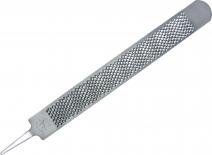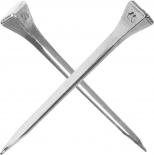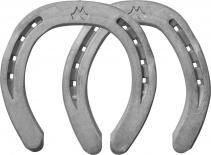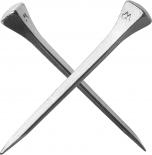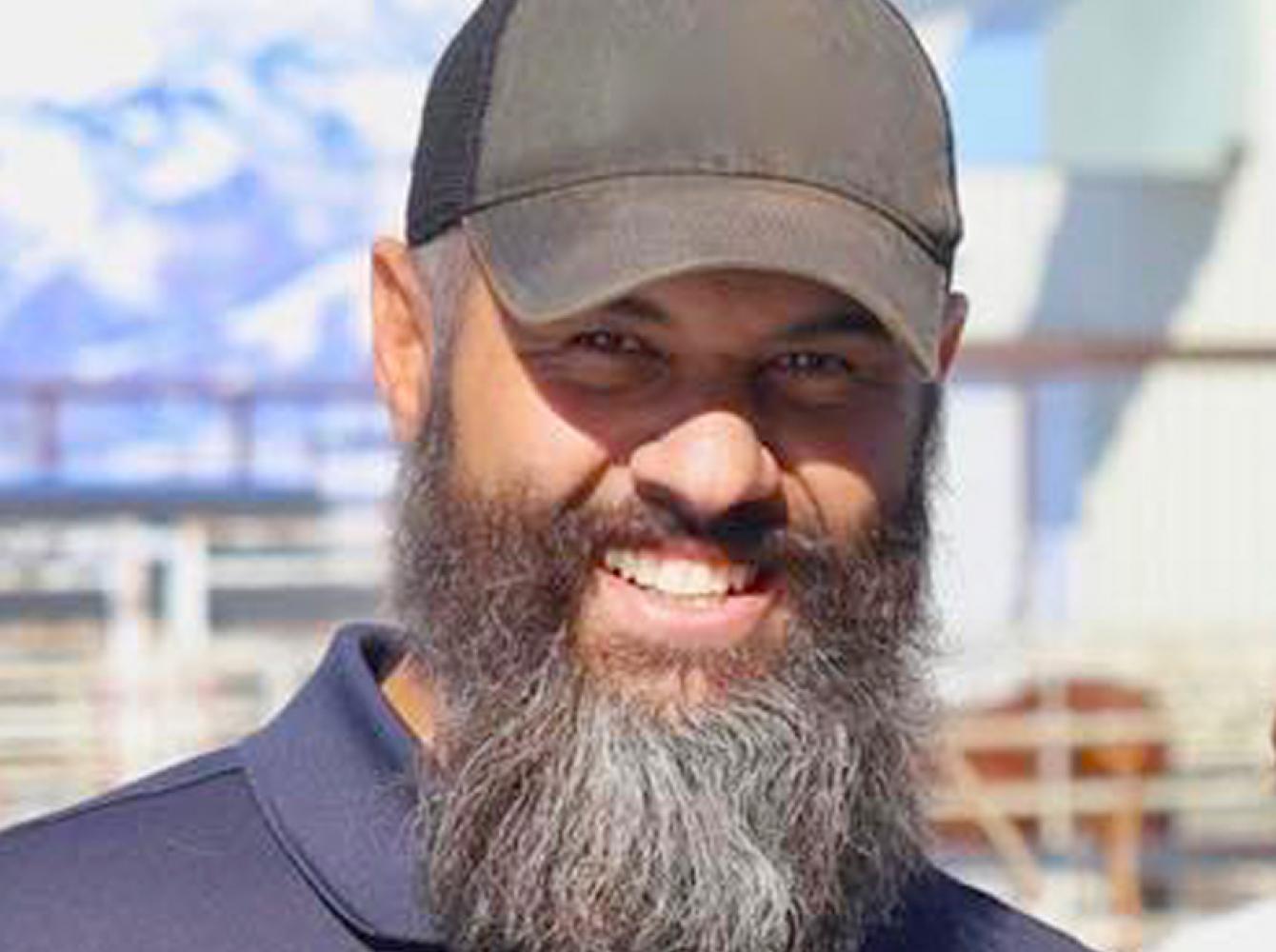
Diego Almeida, CJF, EE, TE, FE, AWCF
“I’ve found something that I love to do.” Diego Almeida has traveled from Brazil to Bozeman. And he hasn’t taken a single shortcut.
The only thing Diego Almeida isn’t good at is bragging.
He started in 2014 by winning the American Farrier’s Journal Rising Shoeing Star Award. Since then, he’s won the American Farrier’s Association Scott J. Simpson Outstanding Educator Award, voted by his fellow farriers three times. No one else has won it more than once since 2016.
He has 13 letters behind his name. That makes him the first and only American Farrier’s Association (AFA) Certified Journeyman Farrier to earn all three advanced endorsements - Educator, Forging, and Therapeutic.
After teaching at the Midwest Horseshoeing School, and then the University of Illinois College of Veterinary Medicine, he was chosen in 2020 to revive the farrier program at Montana State University.
And he maintains a thriving private practice.
But what’s even more impressive is the road he traveled, and the roadblocks he overcame, to get where he is today.
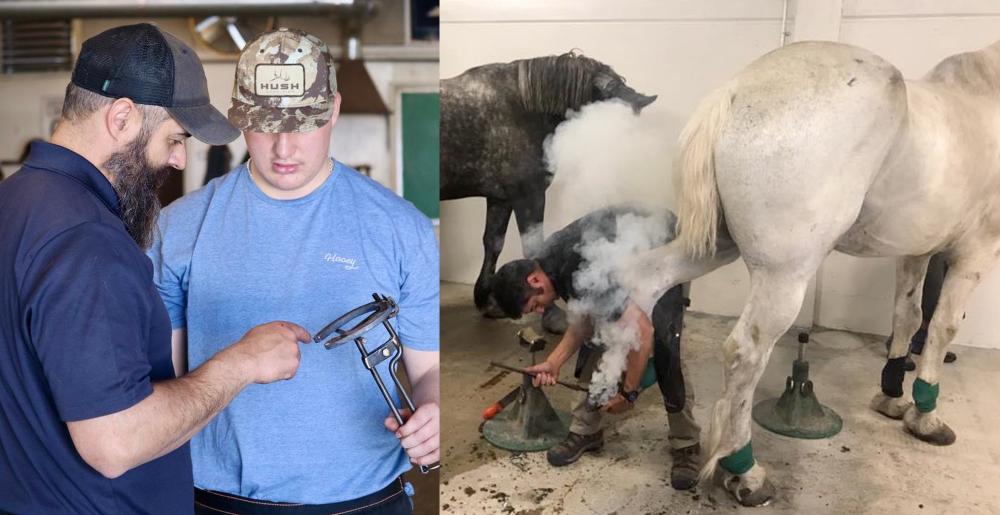
When you get bucked off, get back on.
Diego Almeida grew up near Recife in northeast Brazil, the son of Ana Almeida and Bruno Almeida, the latter a Colonel in the Brazilian army. While his dad grew up with horses, young Diego had no interest in them.
Until he did.
When Diego was 10, a neighbor took his daughter to riding lessons at a humble local facility. Diego tagged along, only to get bucked off a horse on his very first ride.
Despite the initial bad luck, Diego was hooked; “I don’t know why, but I just fell in love with it.”
When Diego started taking lessons, his father bought him a horse— the very one who had bucked him off. And Diego was promptly bucked off again.
Eduardo Falcāo, an experienced horseman, told his father, “You’re gonna kill your kid like that.” Thankfully, Eduardo agreed to work as Diego’s coach, teaching him English show jumping.
Diego’s never-give-up attitude was already evident.
I don’t have any hobbies because I cannot do something just for the fun of it.
Up To Code
When it was time for Diego to decide what he would study, he was wowed by the state-of-the-art facilities of the computer science program—and the possibilities of a career in programming, even though it would take him far away from his childhood dream of a life with horses.
So, he passed the extremely competitive computer science test for Brazilian students entering university, completed the program to become a software engineer, and started working on early cell phone and video call technology.
But, as his employer lost its market leadership, the work stopped being challenging. When a bored Diego picked up his father’s old guitar, he was ready for something new.
Soon, he was reading books on music theory and studying the blues.
He wasn’t planning on leaving computers behind. “I didn’t want to be a rock star. I wanted to produce music because then I could combine my computer and musical knowledge.”
And that’s exactly what Diego decided to do. He sold everything he had, moved across the world to Chicago, and worked on establishing a new life and career there.
Farriery still wasn’t on his mind.
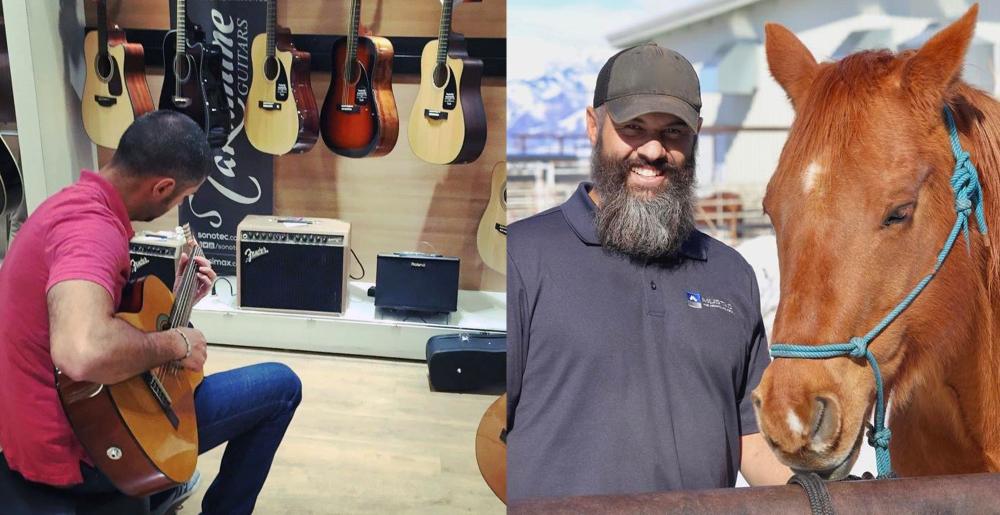
I stopped riding horses. I thought that part of my life was over.
Chicago blues and happy trails
“I sold everything. I quit a good job. Everybody told me I was nuts. But I was going crazy because I wasn’t doing anything of value.”
His community college in Illinois set Diego up with a host family. With the money he saved from his tech job, he had a year of expenses covered as long as he could find a decent job. Then 9/11 happened. Changing National Security measures meant Diego could no longer get a social security number, making finding a job much harder.
He credits his host, Rena Chengary, with changing the direction of his life during a very uncertain and stressful time. She gave him a trail ride for his birthday—maybe because he was the only one of four roommates who helped with household chores. As it turned out, the stable owner, seeing how well Diego could ride, hired him as a summer trail guide. But when he could not sign up for the required 12 credits, the college told Diego that he would have to return to Brazil.
“Rena asked me, ‘Have you ever thought about horseshoeing?’ I hadn’t. But then she handed me an envelope and said, ‘You can use this money to go home. Or you can go to horseshoeing school. The decision is yours. It’s my gift to you.’”
Having already sold his car, the logistics wouldn’t be easy, but he was going to horseshoeing school—no matter what.
My family thought I was mad again.
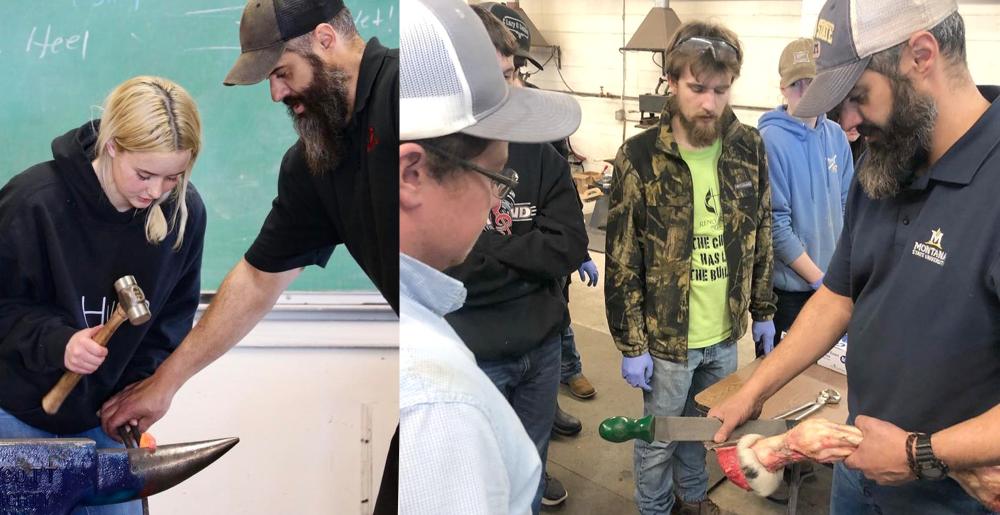
I'm looking at the students. I'm like, okay, what do we do now? So I remembered all the exercises that I did at night, practicing to get better.
From building shoes to building schools
Enrolling in yet another school added even more expenses. To make ends meet, Diego had a job walking ponies at birthday parties. “I’d have enough money to buy my train ticket back to school and to have some food for the week.”
And forging was an ongoing challenge. As the course neared its end, Diego still wasn’t feeling confident.
Fortunately, local farrier Steve Sermersheim was looking for a new apprentice. He was upfront with Diego, letting him know four things: he would shoe many horses, not make much money, and learn quite a bit. And Steve made a point of mentioning that he might be a little hard to work for, although not quite in those words.
Diego stayed on, not for two, but for four years. That’s when Steve bought the same horseshoeing school Diego attended and asked him to teach there for the first year.
Exhausted from a nine-hour drive in a blizzard, Diego faced his very first class—and called up the simple, direct lessons that had worked for him as a student. They still worked.
This new role sparked a passion for teaching, which eventually led to his current position at Montana State University’s Farrier School. There, Diego has stayed true to his roots: train on the fundamentals, even if they seem boring, build a lot of shoes (and a lot of types of shoes), and learn from every shoe you make.
Q&A with Diego Almeida, CJF, EE, TE, FE, AWCF
Diego Almeida is the program director and lead instructor at Montana State University’s Farrier School in Bozeman. He also maintains a full private practice. We sat down to ask him to share his thoughts. Here’s what he had to say:
You work extremely hard. How do you avoid the physical toll of horseshoeing?
What breaks your body is not the work. It’s horses who don’t behave. We make sure to keep the horses occupied while we work on them, so they don’t get bored and misbehave.
What advice would you give a young farrier?
Your job is to make your mentor’s job easier. Your mentor’s job is to teach you. It was important that Steve never called any of his apprentices helpers. If somebody hires you just to pull and clench shoes, and there’s no teaching involved, that’s not an apprenticeship.
What’s your business philosophy?
People think that we're in the business of shoeing horses. In reality, we have to sell the experience of working with us, because we are actually in the business of customer service. Shoeing horses is just part of the deal.
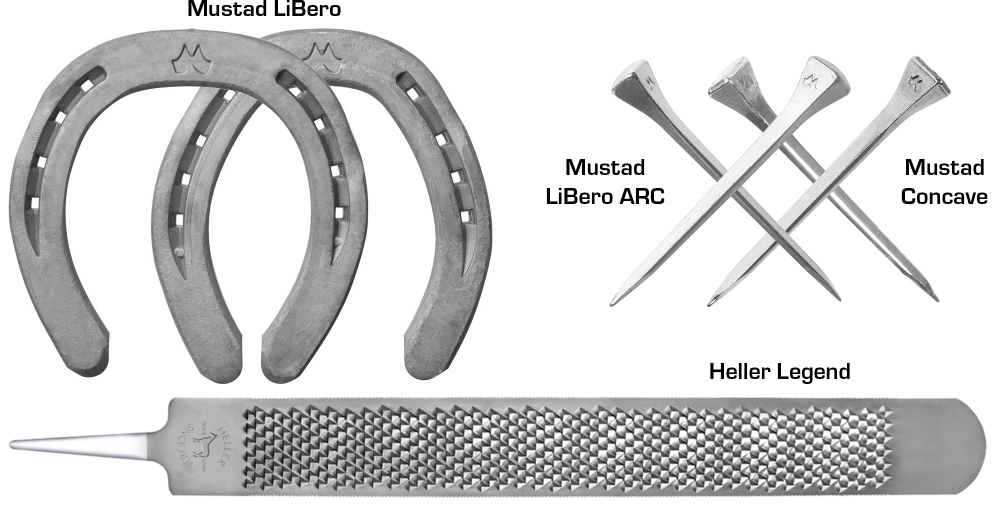
What Mustad products do you use?
Mustad Field Rep Kris Kibbey has set up a direct institutional account for the horseshoeing program at MSU. For smaller purchases, I will often go to Montana Farrier Supply or order from Well-Shod.
I use Mustad LiBeros with Libero ARC Nails* or Mustad Concave Nails for the heavy wear on the hard Montana ground in summer.
It’s also a good training shoe for students, and “I love the shape.” The shank of the nails is longer, so you can get a high nail line. This is especially useful in spring when hooves grow fast, and in the summer, when horses stomp flies.
I’ve tried several rasps, and the Heller Legend Rasp (White Tang) just work best for me. I borrowed a box during a competition and have used them ever since.
There’s downtime in Montana in winter. Where can we find you in the slower winter months?
When I’m not at school, I’m at home. I love being at home. So I spend more time at home, reading, and hanging out. I love to read. I just finished a book by David Goggins. And I’m reading a book by Carl Jung on Synchronicity. In the winter, we also go to Arizona to do some additional work.
You can find Diego at Montana State University or on the Montana State Instagram account. He also has a personal Linkedin profile and Instagram account.
*Contact your Mustad rep for Lebero ARC Nail availability and or to special order
